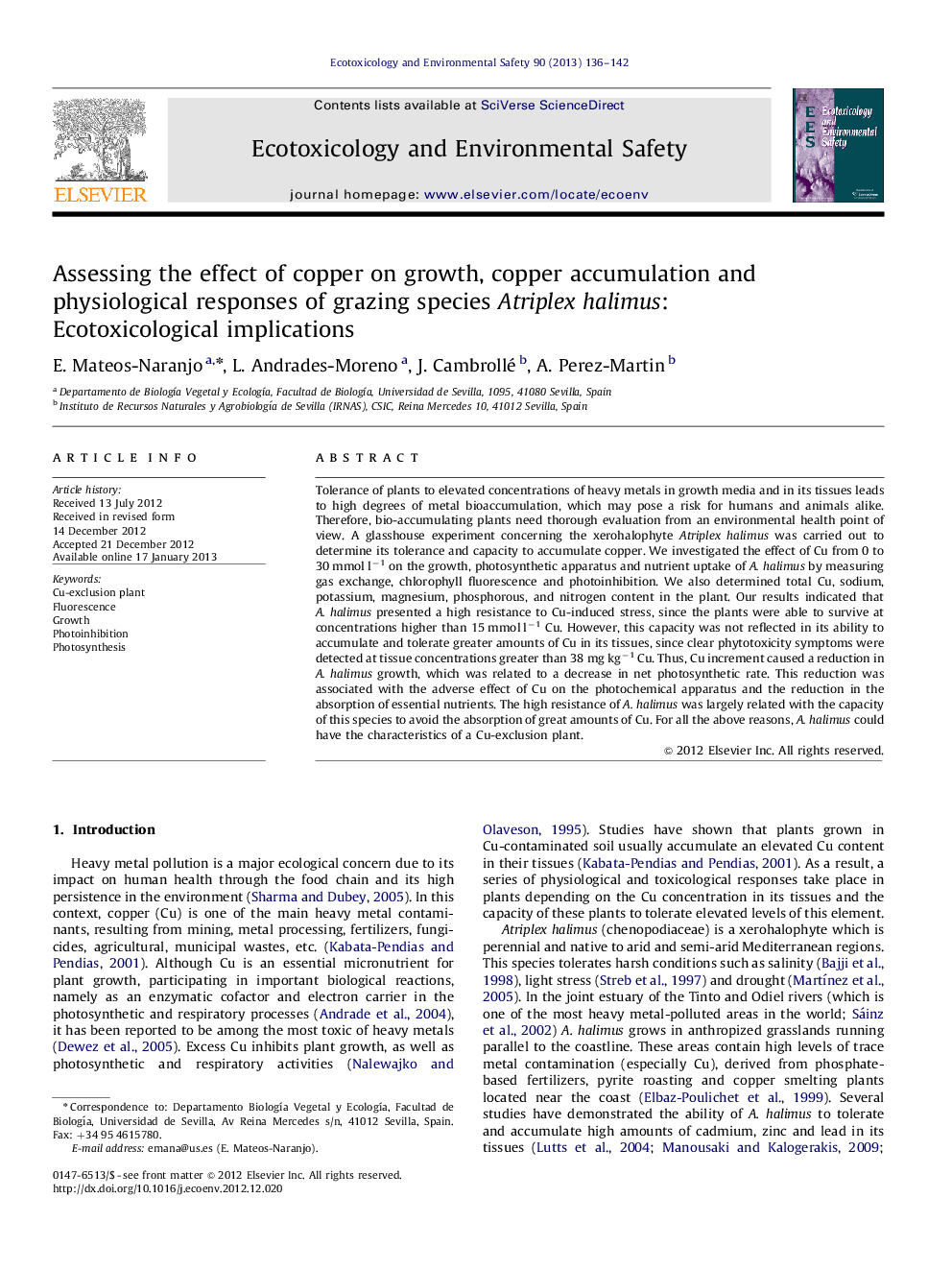| کد مقاله | کد نشریه | سال انتشار | مقاله انگلیسی | نسخه تمام متن |
|---|---|---|---|---|
| 6312439 | 1618973 | 2013 | 7 صفحه PDF | دانلود رایگان |

Tolerance of plants to elevated concentrations of heavy metals in growth media and in its tissues leads to high degrees of metal bioaccumulation, which may pose a risk for humans and animals alike. Therefore, bio-accumulating plants need thorough evaluation from an environmental health point of view. A glasshouse experiment concerning the xerohalophyte Atriplex halimus was carried out to determine its tolerance and capacity to accumulate copper. We investigated the effect of Cu from 0 to 30 mmol lâ1 on the growth, photosynthetic apparatus and nutrient uptake of A. halimus by measuring gas exchange, chlorophyll fluorescence and photoinhibition. We also determined total Cu, sodium, potassium, magnesium, phosphorous, and nitrogen content in the plant. Our results indicated that A. halimus presented a high resistance to Cu-induced stress, since the plants were able to survive at concentrations higher than 15 mmol lâ1 Cu. However, this capacity was not reflected in its ability to accumulate and tolerate greater amounts of Cu in its tissues, since clear phytotoxicity symptoms were detected at tissue concentrations greater than 38 mg kgâ1 Cu. Thus, Cu increment caused a reduction in A. halimus growth, which was related to a decrease in net photosynthetic rate. This reduction was associated with the adverse effect of Cu on the photochemical apparatus and the reduction in the absorption of essential nutrients. The high resistance of A. halimus was largely related with the capacity of this species to avoid the absorption of great amounts of Cu. For all the above reasons, A. halimus could have the characteristics of a Cu-exclusion plant.
⺠Copper tolerance and accumulation capacity Atriplex halimus were analyzed. ⺠A. halimus was able to survive at concentrations greater than 15 mmol lâ1. ⺠Its tolerance was related with its capacity to avoid the absorption of great amounts of Cu. ⺠A. halimus could have the basic characteristics of a Cu-exclusion plant. ⺠These characteristics should reduce health risks in Cu polluted environments.
Journal: Ecotoxicology and Environmental Safety - Volume 90, 1 April 2013, Pages 136-142